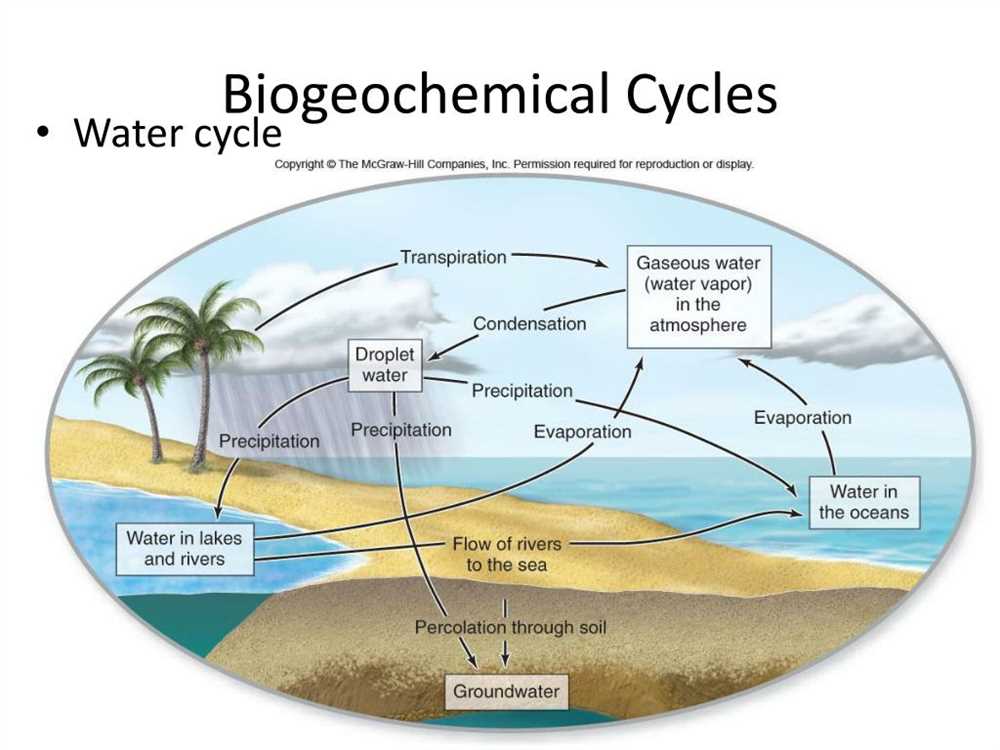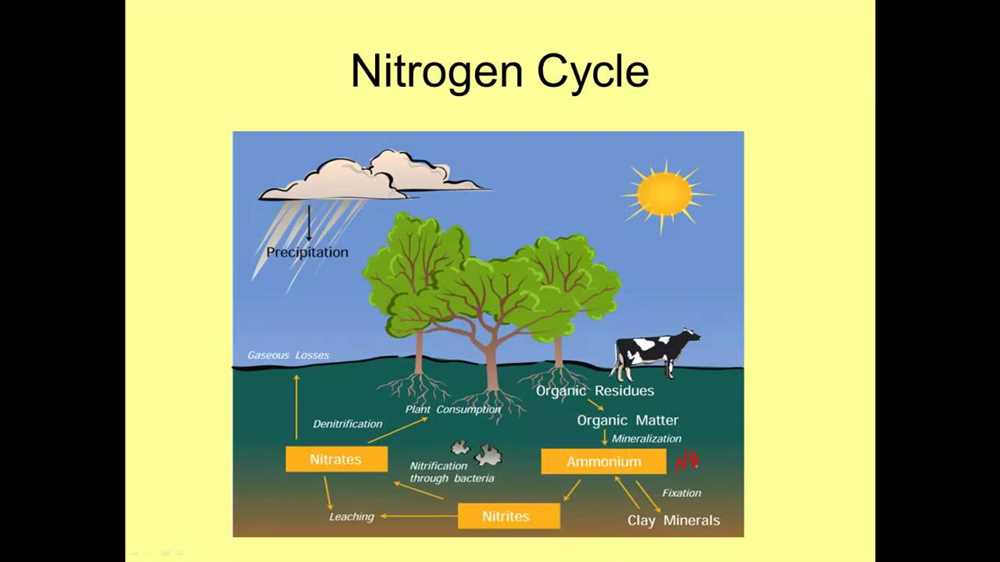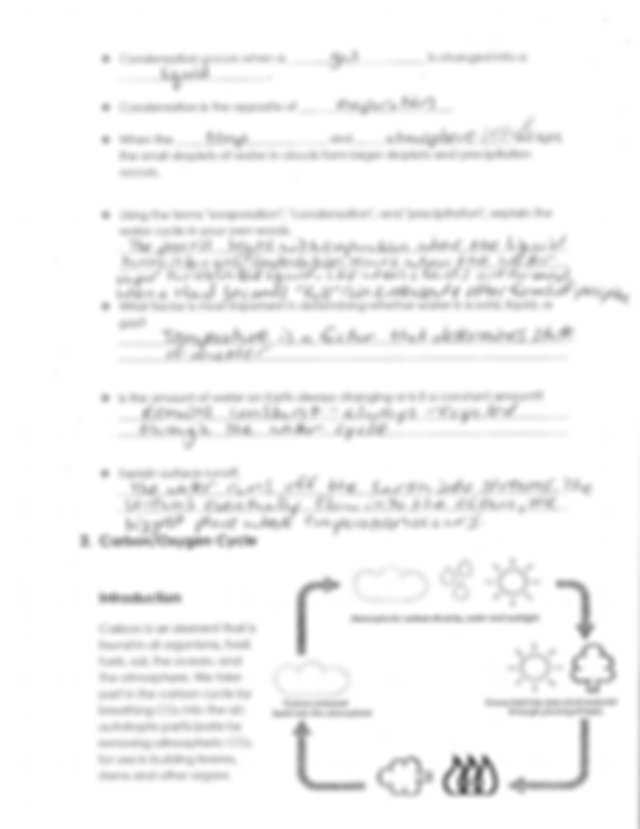
Understanding biogeochemical cycles is crucial for comprehending the interconnectedness of the Earth’s systems and the delicate balance that sustains life on our planet. In this article, we will dive deep into the answers to a biogeochemical cycles webquest, unraveling the complexities of the carbon, nitrogen, and phosphorus cycles.
The carbon cycle, often referred to as the backbone of life on Earth, plays a crucial role in regulating the climate by cycling carbon between the atmosphere, oceans, and terrestrial ecosystems. We will explore how human activities, such as burning fossil fuels and deforestation, are amplifying the carbon cycle, leading to dangerous increases in greenhouse gas emissions and global warming.
Moving on to the nitrogen cycle, we will uncover the various processes that convert nitrogen gas from the atmosphere into usable forms for plants and other organisms. We will examine the roles of nitrogen-fixing bacteria, lightning, and industrial fertilizers in this vital cycle, as well as the consequences of excessive nitrogen runoff, including harmful algal blooms and oxygen-depleted dead zones in aquatic ecosystems.
Lastly, we will dive into the phosphorus cycle, an essential nutrient cycle that influences plant growth and the overall productivity of ecosystems. We will uncover how weathering and erosion release phosphorus from rocks and minerals, how it cycles through organisms, and the effects of human activities, such as excessive fertilizer use, on phosphorus levels in aquatic ecosystems.
By exploring the answers to a biogeochemical cycles webquest, we can gain a deeper understanding of the intricate processes that sustain life on Earth and the importance of preserving the delicate balance of these cycles for future generations.
What are Biogeochemical Cycles?
Biogeochemical cycles are natural processes that transfer essential elements and compounds between living organisms and the environment. These cycles play a vital role in maintaining the balance of nutrients and chemicals in various ecosystems.
Carbon Cycle: The carbon cycle is one of the most important biogeochemical cycles. It involves the transfer of carbon between the atmosphere, oceans, land, and living organisms. Carbon dioxide, a greenhouse gas, is taken up by plants through photosynthesis and converted into organic matter. When organisms respire or decompose, carbon dioxide is released back into the atmosphere. Additionally, carbon is stored in fossil fuels and can be released through combustion.
Nitrogen Cycle: The nitrogen cycle is responsible for converting atmospheric nitrogen into usable forms for living organisms. Nitrogen fixation is the process by which certain bacteria convert atmospheric nitrogen into ammonia (NH3) or nitrate (NO3-) ions. This nitrogen is then used by plants to synthesize proteins and other organic compounds. Animals feed on plants and obtain nitrogen through the food chain. The nitrogen cycle also involves processes such as nitrification, denitrification, and nitrogen mineralization.
- Phosphorus Cycle: The phosphorus cycle involves the movement of phosphorus through the lithosphere, hydrosphere, and biosphere. Phosphorus is an essential nutrient for all organisms as it is a key component of DNA, RNA, and ATP. Phosphate ions are released from rocks and minerals through weathering, and then taken up by plants. Animals obtain phosphorus by consuming plants or other animals. Phosphorus is ultimately returned to the soil through decomposition or excretion.
- Water Cycle: The water cycle is another important biogeochemical cycle that involves the continuous movement of water between the atmosphere, land, and oceans. Water evaporates from the surface of bodies of water, forms clouds, and eventually falls back to the Earth as precipitation. This precipitation infiltrates the soil, which then becomes available for plants and animals. The water cycle also includes processes such as transpiration, condensation, and runoff.
- Sulfur Cycle: The sulfur cycle involves the movement of sulfur between the atmosphere, lithosphere, and biosphere. Sulfur is released into the atmosphere through volcanic activity and the burning of fossil fuels. Certain bacteria can convert sulfur compounds into usable forms for plants. Sulfur is incorporated into amino acids and proteins by plants and is then passed on to animals through the food chain. Decomposition returns sulfur to the soil.
In conclusion, biogeochemical cycles are essential for the maintenance of life on Earth. They allow the cycling and recycling of essential elements and compounds, ensuring that they are available for organisms to survive and thrive in various ecosystems.
Importance of Biogeochemical Cycles
Biogeochemical cycles are essential processes that occur in the Earth’s ecosystems, ensuring the continuous flow of elements and substances necessary for life. These cycles, including the nitrogen, carbon, and phosphorus cycles, play a crucial role in maintaining the balance and stability of the environment.
One of the key reasons why biogeochemical cycles are important is their role in nutrient cycling. These cycles regulate the availability and distribution of essential elements such as carbon, nitrogen, and phosphorus, which are necessary for the growth and survival of organisms. For example, the carbon cycle helps to maintain the balance of atmospheric carbon dioxide, a greenhouse gas that influences climate change. The nitrogen cycle is responsible for converting atmospheric nitrogen into forms that can be used by plants and animals, ensuring the availability of nitrogen for protein synthesis and other vital biological processes. The phosphorus cycle ensures the recycling of phosphorus, a vital nutrient for plant growth and development.
Moreover, biogeochemical cycles also play a crucial role in maintaining the overall health and functioning of ecosystems. These cycles are interconnected and interdependent, with each cycle influencing and being influenced by others. For example, changes in the carbon cycle affect the nitrogen and phosphorus cycles, and vice versa. Any disruption or imbalance in these cycles can have significant impacts on the environment, including altered nutrient availability, impaired ecosystem functioning, and even the loss of species.
- In summary, biogeochemical cycles are of utmost importance for the functioning and sustainability of ecosystems. They regulate the availability of essential elements and nutrients, contribute to climate regulation, and maintain the overall health and balance of the environment. Understanding and managing these cycles is crucial for preserving and conserving Earth’s ecosystems for future generations.
The Water Cycle
The water cycle, also known as the hydrological cycle, is a continuous process that describes the movement of water on, above, and below the Earth’s surface. It involves the evaporation of water from the Earth’s surface, the condensation of water vapor in the atmosphere, and the precipitation of water in the form of rain or snow.
Evaporation is the process by which water changes from a liquid to a gas, usually due to the heat from the sun. As the sun’s energy heats up bodies of water, such as rivers, lakes, and oceans, water molecules gain enough energy to break free from their liquid state and become water vapor. This water vapor then rises into the atmosphere, where it cools and condenses into clouds.
Condensation is the process by which water vapor changes from a gas to a liquid. When water vapor in the atmosphere cools down, the water molecules slow down and come together to form water droplets or ice crystals, which make up clouds. These clouds can then release the condensed water in the form of precipitation, such as rain, snow, or hail.
Precipitation is the process by which water falls from the atmosphere back to the Earth’s surface. It can occur in various forms, such as rain, snow, sleet, or hail, depending on the temperature and atmospheric conditions. When the water droplets or ice crystals in the clouds become too heavy to remain suspended in the air, they fall to the ground and replenish the Earth’s freshwater sources, including rivers, lakes, and underground aquifers.
The water cycle is an essential process for maintaining the Earth’s water balance. It helps to distribute water resources around the planet, replenish freshwater sources, and regulate the Earth’s temperature and climate. It is a complex system influenced by various factors, such as temperature, humidity, wind patterns, and geographic features. Understanding the water cycle is crucial for managing and conserving water resources for both human and environmental needs.
Overview of the Water Cycle

The water cycle, also known as the hydrological cycle, is a continuous process that circulates water throughout the Earth. It involves the movement of water between the atmosphere, land, and oceans through various processes such as evaporation, condensation, precipitation, and runoff.
Evaporation is the process by which water changes from a liquid state to a gaseous state. It occurs when heat energy from the sun causes the water on the Earth’s surface, such as oceans, lakes, and rivers, to turn into water vapor and rise into the atmosphere.
Condensation is the process by which water vapor in the atmosphere cools and changes back into a liquid state. As the water vapor rises and cools, it forms tiny droplets around particles in the air, such as dust or pollutants, to form clouds.
Precipitation occurs when the moisture in the clouds becomes too heavy and falls back to the Earth’s surface in the form of rain, snow, sleet, or hail. Precipitation is a crucial part of the water cycle, as it replenishes the Earth’s water resources, including rivers, streams, and underground aquifers.
Runoff is the movement of water from the land surface into bodies of water, such as rivers, lakes, and oceans. It occurs when the ground becomes saturated with water and cannot absorb any more, or when water flows over impermeable surfaces such as pavement or compacted soil.
The water cycle is essential for sustaining life on Earth. It helps regulate temperature, distribute freshwater, and provide a habitat for various organisms. Understanding the water cycle is crucial for managing water resources and addressing challenges such as droughts, floods, and water pollution.
Processes in the Water Cycle

The water cycle, also known as the hydrological cycle, is a continuous process that circulates water between the Earth’s surface, atmosphere, and back again. This global process involves several key processes, including evaporation, condensation, precipitation, and transpiration.
Evaporation: This is the process where water changes from a liquid state to a vapor or gas state. The heat from the Sun causes water to evaporate from the Earth’s surface, such as bodies of water, soil, and plants. The water vapor then rises into the atmosphere.
Condensation: As water vapor rises into the atmosphere, it cools and condenses into tiny water droplets, forming clouds. These clouds are made up of millions of these droplets. Condensation is an essential process in the formation of clouds and plays a crucial role in the water cycle.
Precipitation: Precipitation occurs when the water droplets in the clouds combine and become too heavy to remain suspended in the air. This results in the release of moisture in the form of rainfall, snow, sleet, or hail. Precipitation is a key mechanism that brings water back to the Earth’s surface.
Transpiration: Transpiration is the process where plants release water vapor through their leaves and stems back into the atmosphere. Plants absorb water from the ground through their roots, and this water is transported through the plant’s tissues to the leaves. It then evaporates through small openings called stomata. Transpiration contributes to the overall water cycle by adding moisture to the atmosphere.
The water cycle is a dynamic system that is essential for maintaining life on Earth. It is a complex series of processes that ensures the continuous movement and distribution of water throughout the planet. Each of these processes plays a unique role in regulating the Earth’s water resources and maintaining the delicate balance of ecosystems. Understanding the water cycle and its processes is crucial for managing water resources and addressing global water-related challenges.
The Carbon Cycle
The carbon cycle is an essential biogeochemical cycle that describes the movement of carbon through the Earth’s atmosphere, ecosystems, and lithosphere. It is crucial for maintaining the balance of carbon dioxide (CO2) in the atmosphere and plays a significant role in regulating global climate.
Carbon exists in various forms on Earth, such as carbon dioxide, organic matter, and fossil fuels. The cycle begins with the process of photosynthesis, where plants take in carbon dioxide from the atmosphere and convert it into carbohydrates. This conversion not only provides energy for the plants but also contributes to the removal of CO2 from the atmosphere.
Once the plants and other organisms die, their remains undergo decomposition and become part of the organic matter in the soil. Carbon from this organic matter can be stored for long periods, forming fossil fuels like coal, oil, and natural gas. Over millions of years, these fossil fuels can be released through volcanic activity or human activities, such as burning fossil fuels for energy.
Another significant component of the carbon cycle is the exchange of CO2 between the atmosphere and the ocean. The ocean serves as a carbon sink, absorbing CO2 from the atmosphere and storing it as dissolved carbon. However, with increasing atmospheric CO2 levels due to human activities, the ocean’s capacity to absorb carbon is becoming limited, leading to ocean acidification and disrupting marine ecosystems.
The carbon cycle also involves processes like respiration, where animals and microorganisms release CO2 into the atmosphere through the breakdown of organic matter. Additionally, the combustion of forests and biomass contributes to the release of carbon back into the atmosphere.
In summary, the carbon cycle is a complex system that involves the exchange of carbon between the atmosphere, terrestrial ecosystems, and the ocean. Understanding and managing this cycle are crucial for maintaining the balance of CO2 in the atmosphere and mitigating the impacts of climate change.